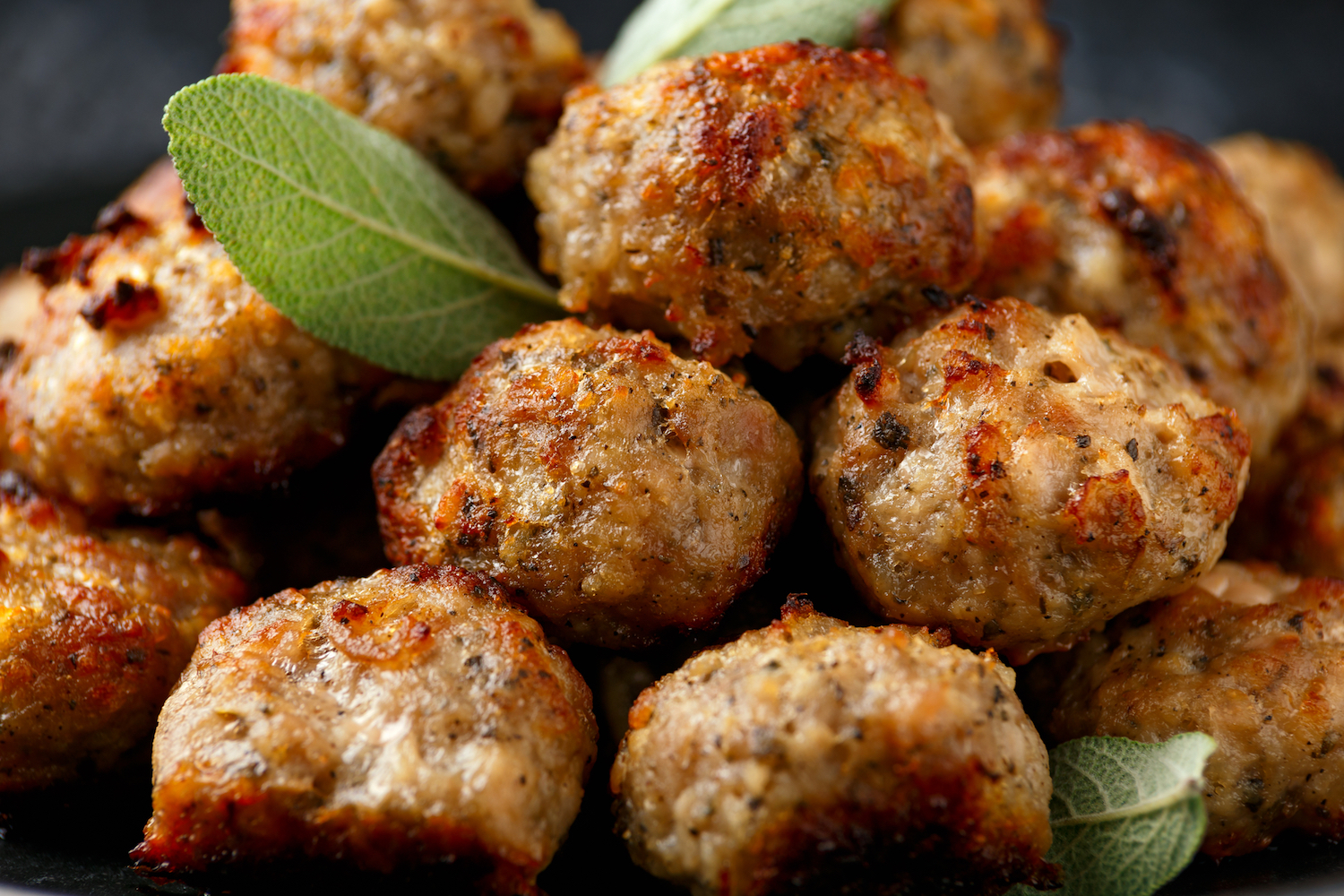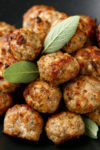
What is Forcemeat?
Forcemeat is made by mixing finely chopped lean meat with fat and adding other flavorings. Forcemeat can be used as a stuffing, made into balls or patties, or formed into flat square or oval pieces.
INFORMATION BELOW FROM 1800s COOKBOOKS:
FORCEMEAT
This article makes a considerable part of good cooking by the flavor it imparts to whatsoever dish it may be added. Exact rules for the quantity cannot easily be given, but the following observations may be useful.
The selection of ingredients should be made according to what they are wanted for. No one flavor should greatly preponderate. Yet if several dishes be served the same day, there should be a marked variety in the taste of the forcemeat, as well as of the gravies.
It should be consistent enough to cut with a knife, but neither dry nor heavy.
The following are the articles of which forcemeat may be made, without giving it any striking flavor: cold fowl or veal, scraped ham, fat bacon, beef suet, crumbs of bread, salt, white pepper, parsley, nutmeg, and yolk and white of eggs well beaten to bind the mixture. To these, any of the following may be added to vary the taste and give it a higher relish. Oysters, anchovy, tarragon, savory, pennyroyal, knotted marjoram, thyme, basil, yolks of hard eggs, cayenne, garlic, shallot, chives, Jamaica pepper in fine powder, or two or three cloves.
FORCEMEAT FOR FOWLS
Shred a little ham or gammon*, some cold veal or fowl, beef suet*, parsley, a small quantity of onion, and a very little lemon peel. Add salt, nutmeg, or pounded mace, bread crumbs, and either white pepper or cayenne. Pound it all together in a mortar, and bind it with one or two eggs beaten and strained. It is usually put between the skin and the flesh.
*gammon – ham that has been cured or smoked like bacon.
*suet – the hard white fat on the kidneys and loins of cattle, sheep, and other animals.
FORCEMEAT FOR SAVORY PIES
The same as for fowls, only substituting fat or bacon instead of suet. If the pie be of rabbit or fowls, the livers mixed with fat and lean pork, instead of bacon, will make an excellent stuffing. The seasoning is to be the same as for fowls.
FORCEMEAT FOR VEAL
Scrape two ounces of undressed lean veal, free from skin and sinews, two ounces of beef or veal suet, and two of bread crumbs. Chop fine two drams* of parsley, one of lemon peel, one of sweet herbs, one of onion, and add half a dram of mace or allspice reduced to a fine powder. Pound all together in a mortar, break into it the yolk and white of an egg, rub it all up well together, and season it with a little pepper and salt. This may be made more savory by the addition of cold boiled tongue, anchovy, shallot, cayenne, or curry powder. They are nice to garnish hashes, roast veal or cutlets, and to put in soup.
*drams – a unit of weight formerly used by apothecaries, equal to one-eighth of an ounce.
FORCEMEAT FOR TURKEY
The same stuffing will do for boiled or roast turkey as for veal, or to make it more relishing, add a little grated ham or tongue, an anchovy, or the soft part of a dozen oysters. Pork sausage meat is sometimes used to stuff turkeys or fowls, or fried, and sent up as garnish.
FORCEMEAT FOR TURTLE
A pound of fine fresh suet, one ounce of cold veal or chicken, chopped fine, crumbs of bread, a little shallot or onion, white pepper, salt, nutmeg, mace, pennyroyal, parsley, and lemon thyme, finely shred. Beat as many fresh eggs, yolks and whites separately, as will make the above ingredients into a moist paste. Roll it into small balls, and boil them in fresh lard, putting them in just as it boils up. When of a light brown, take them out, and drain them before the fire. Balls made in this way are remarkably light, but being greasy, some people prefer them with less suet and eggs.
BEEF FORCEMEAT BALLS
Boil a lean piece of beef. When perfectly done, chop fine, flavoring with a very small quantity of onion, pepper, and salt. Make into small balls, wet them on the outside with eggs, and roll in grated cracker or fine bread crumbs. Fry these forcemeat balls a light brown. When serving the dish, put these around a roast or tenderloin and pour over the whole a rich gravy. A sumptuous dish.
BEEF OLIVES
Cut slices from a fat rump of beef six inches long and half an inch thick. Beat them well with a pestle. Make a forcemeat of bread crumbs, fat bacon chopped, parsley, a little onion, some shredded suet, pounded mace, pepper and salt, and mix it up with the yolks of eggs. Spread a thin layer over each slice of beef, roll it up tight, and secure the rolls with skewers. Set them before the fire and turn them till they are a nice brown. Have ready a pint of good gravy, thickened with brown flour and one teaspoon butter, a gill* of red wine, with two spoons of mushroom catsup. Lay the rolls in it, and stew them till tender.
*gill – a liquid measurement. Four ounces in the U.S. and five ounces in the U.K.
TOMATO FORCEMEAT
- 1 tomato finely chopped
- 1 pimento finely chopped
- 1 cup raw fish finely chopped
- 2 tablespoons butter
- 1 tablespoon flour
- 1⁄4 teaspoon salt
- 1 tablespoon chopped onion
Melt butter, add the onion, and cook three minutes. Add remaining ingredients and cook ten minutes longer. Use as filling for fish sandwiches or spread over fish chops.
FORCEMEAT BALLS FOR FISH
To make fine forcemeat balls for fish soups or stewed fish, beat together the flesh and soft parts of a lobster, half an anchovy, a large piece of boiled celery, the yolk of a hard egg, a little cayenne, mace, salt, and white pepper. Add two tablespoons of bread crumbs, one of oyster liquor, two ounces of warmed butter, and two eggs well beaten. Make the whole into balls, and fry them in butter, of a fine brown.
Image from Deposit Photos
=================================================
Do You Make Homemade Forcemeat or Stuffing? Please Leave a Comment Below.
=================================================




3 thoughts on “What is Forcemeat?”
I’m reading about Force-Meat in the original Boston Cooking School Cookbook 1896.
Modernizing the recipe with a good processor would make these recipes frugal and delicious. The recipes didn’t tell how to cook them but one did mention salted boiling water. I turned to this article to confirm my thoughts of getting them in a fat.
Thank you!
I’m glad you liked my post. I began reading old cookbooks about 5 years ago, and although they’re interesting, they were often hard to follow, especially the ones published in the earlier part of the century.
I’d never heard of this before. Sounds delicious!